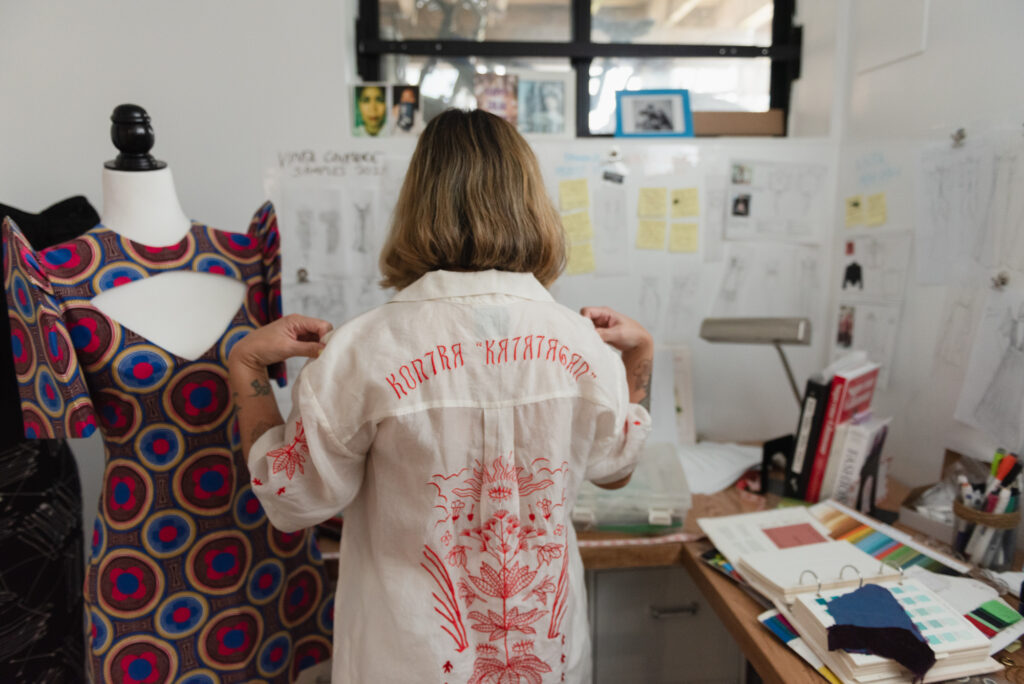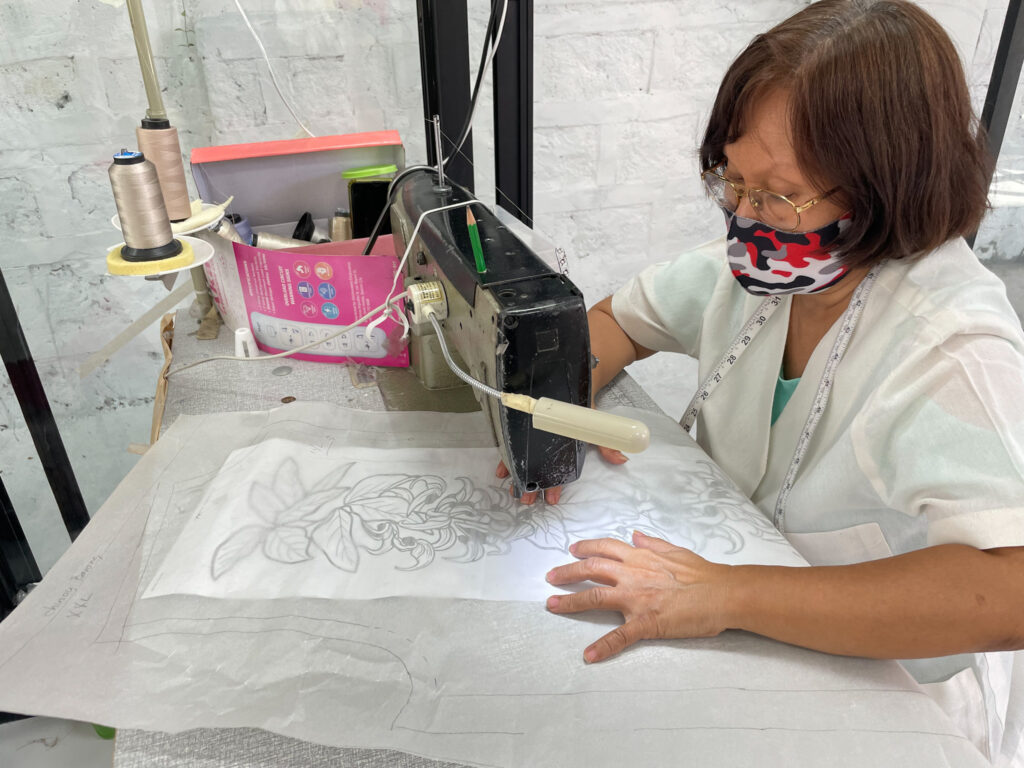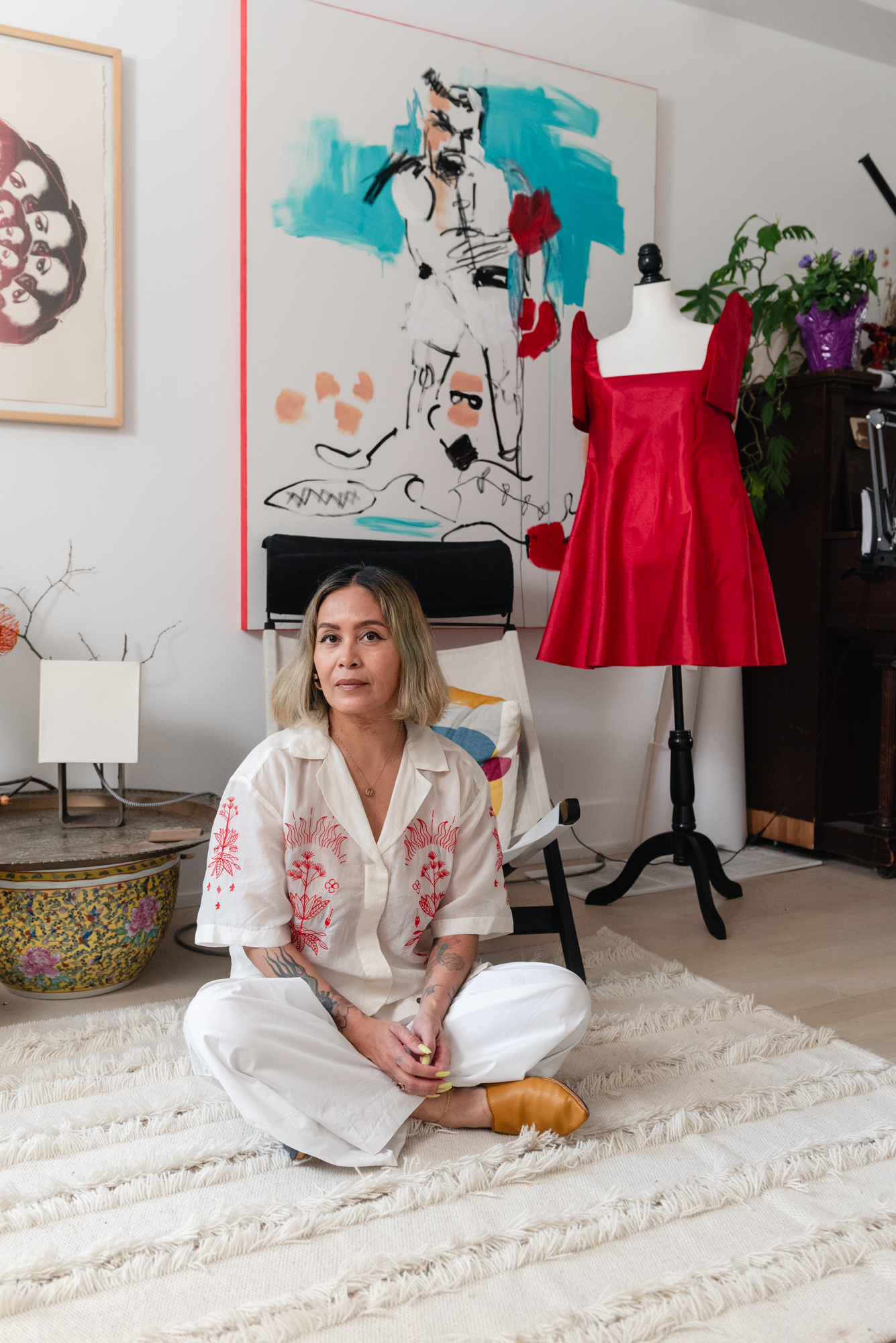Caroline Mangosing’s first stint in the fashion industry left her feeling disillusioned and out of place. “I was doing fashion photography in New York in the mid-’90s. Skinny models were in and the industry was super cutthroat,” she says. So, she left. She began volunteering for a youth photography program, then shifted gears to launch Toronto’s Kapisanan Philippine Centre for Arts and Culture, a youth-led non-profit fostering creativity and mentorship among Filipino-Canadians, in 2007. But as executive director, Mangosing couldn’t escape fashion. She received countless requests for Filipiñana, the traditional dress worn by women in the Philippines, for cultural events—unsurprisingly, since Toronto has one of the largest Filipino diasporas in North America. Instead of importing cheaply made costume-like dresses from the Philippines, she launched Vinta Gallery, a slow, small and sustainable Filipino-inspired clothing company based in Manila. The decision to base Vinta Gallery in the Filipino capital was a deeply personal one for Mangosing, who chose Manila-based couturier Estelita Lagman to design her wedding dress, then decided to build the fledgling business around her. Lagman is now Vinta Gallery’s founding master couturier. Below, Mangosing discusses eschewing fast fashion, the importance of political outspokenness and what’s next for the brand.
How did you start your clothing brand and what were some of
the challenges?
In the beginning, I didn’t know what I was doing. I didn’t know how to start up a business in the Philippines, even though I’m from there. When we started as a social enterprise in 2013, we made just one dress at a time, and it was Estelita sewing in her house. Once we incorporated in 2016, I rented a house, bought a couple sewing machines and Estelita brought in a couple more sewers. I’m proud of having a staff of 20 [primarily women] who feed their families in the Philippines, put their kids through school and are the main breadwinner.
It’s my moral compass. I was always a very radical activist type, so that’s imbued in the brand
The Global South isn’t typically associated with ethical fashion. Why was it important for Vinta to be ethical?
I was already into social justice and had been an activist through college, and I was running this non-profit catering to youth, so it would be weird if I just went into fast fashion. When I did my research in Manila, I would go to these manufacturing outfits, and conditions were really bad. The Philippines is a tropical country, and there were people pressing clothing in a room with no air conditioning; it was 40 degrees [Celsius] inside. It was literally a sweatshop, and I didn’t want any part of it.
How does a fashion brand help decolonize Filipino fashion and culture?
The traditional Filipino barong has what looks like French and Belgian lace, while embroidery on the Filipiñana is very Spanish looking. We don’t do that. Once we got in-house embroiderers, I hired a local artist to design embroidery featuring flora and fauna that’s endemic to the Philippines. It’s a way to teach eco-diversity and talk about the national flower [a type of Jasmine commonly known as sampaguita] in a cultural context.
You’ve been outspoken about political and cultural issues, both on your personal social media and in content you publish through Vinta—and have sometimes received backlash for
your opinions, including your critique of the Broadway musical Here Lies Love, about former first lady of the Philippines Imelda Marcos. How do you balance sharing these views with what’s good for business?
I don’t think about it. It’s my moral compass. I was always a very radical activist type, so that’s imbued in the brand. The content we publish on Vinta’s blog is an evolution of what I was already doing at Kapisanan, which was so revolutionary because a lot of young people were never taught critical culture and history. We need to be critical because Filipinos were colonized, and there has never been a platform where we could see critique or discourse on certain [ideas] we’ve been led to believe our whole lives, like the notion passed down from older generations that if you’re quiet, get along with everyone and do your job, you’ll survive. Younger generations are no longer okay with staying silent [against injustice].

Get the
Three from 3
newsletter
Join our global community of sharp, curious thinkers to receive a carefully curated email of the three most important things to read, see and do this week.
Listen and learn.
Tune into Third Culture Leaders, a podcast hosted by our co-founder and publisher, Muraly Srinarayanathas.
Explore how leaders skillfully navigate multiple cultural landscapes, leveraging their diverse backgrounds to drive innovation and change.
Vinta’s customers are almost exclusively Filipino, but you’re hoping to reach
a wider audience with a new line launching this year. What can you share?
Non-Filipinos are scared to wear Vinta because they don’t think it’s for them. They think it’s cultural appropriation, so I needed to do another brand, called Regalo Studios, which means “gift” [in Tagalog]. There are different ways you can wear each garment, and we’re scaling up and doing hybrid manufacturing. Part of it will be manufactured in our atelier in Manila and the other half will be low-volume ethical manufacturing in China. I’m working with a second-generation small business that’s worked in China for over 40 years. They do their due diligence and they have staff working there to ensure their manufacturing partners’ productions are well-run, ethical and socially compliant. It’s not about where the manufacturing is happening, but how.
This expansion allows us to differentiate Filipino inspiration in the creative direction and design, and expands our market. And for me, creatively, this is a whole new world to explore.
This interview has been edited and condensed for clarity.

